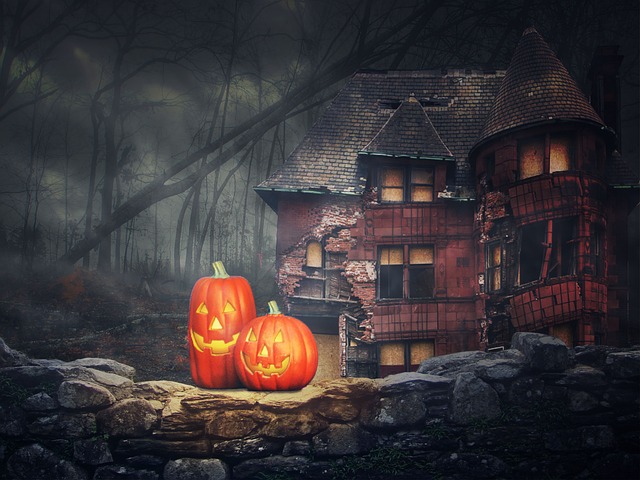The Hidden Dangers of Halloween: What Sends Thousands to Emergency Rooms

Halloween delivers genuine scares alongside imaginary ones. Each year, thousands of Americans require emergency medical care for Halloween-related injuries, with several hazards proving unexpectedly prevalent.
Pumpkin carving stands out as a primary culprit behind Halloween injuries, data from the US Consumer Product Safety Commission reveals. Falls during trick-or-treating and pedestrian accidents also rank high, with children experiencing dramatically elevated risks of fatal vehicle strikes on Halloween compared to typical days.
Annual Emergency Department Trends
Emergency physicians witness a consistent pattern of Halloween-related injuries each year. The US Consumer Product Safety Commission estimates around 3,200 individuals receive emergency department care annually for Halloween injuries, with approximately 1,400 being children.
Over half of all emergency visits relate to pumpkin carving incidents. Adults frequently need stitches after knives slip while cutting resistant pumpkin exteriors. Children may sustain harm when reaching across carving spaces at wrong moments. These injuries can include deep cuts to palms or fingers, occasionally severe enough to require tendon repair procedures.
Injury Distribution Patterns
Trips and falls constitute the next leading cause, representing roughly one-quarter of Halloween-related injuries. These predominantly occur during trick-or-treating excursions. Multiple factors elevate fall risks compared to regular days, including unfamiliar terrain, extended costumes, and poor lighting conditions. Falls can also result from decoration installation or removal activities.
A smaller but notable segment of Halloween emergency situations stems from decoration and costume injuries or food allergies. Candles placed inside pumpkins or near flowing costumes can quickly ignite fabric or synthetic wigs, resulting in burns. Costumes and makeup products or peanuts and tree nuts in candies can provoke severe allergic responses and rashes.
Vehicular Accident Analysis
A 2019 study in JAMA Pediatrics analyzed over four decades of national crash information to assess whether Halloween poses heightened pedestrian risks. Researchers compared fatality counts on Halloween night with deaths on identical weekdays one week before and after. The investigation uncovered a notable difference: Pedestrians experienced nearly twice the probability of being hit and killed by vehicles on Halloween versus other days.
Children ages 4 to 8 faced the greatest danger, being 10 times more likely to perish while walking on Halloween evening compared to other days. Researchers determined that pedestrian deaths spike dramatically during trick-or-treat periods when more children are outdoors and visibility is compromised.
Evening Safety Recommendations
Traffic safety demands primary attention. Young children require constant adult accompaniment, and families should stay on sidewalks or pathways instead of walking in roadways. Drivers have restricted visibility after dark, and many neighborhoods experience crowding during trick-or-treat times, making intersection crossings and careful scanning vital.
Costumes should fit correctly and allow free movement. Avoid loose or excessively lengthy costumes that can trigger trips and falls. Masks shouldn’t impede vision or breathing; makeup or face paint offers a safer option, though verify any products are nontoxic and designated for skin use. Eliminate all products completely before sleep to avoid irritation or allergic reactions.
Visibility serves as another key element. Incorporating reflective tape on costumes or bags, wearing bright hues, and carrying flashlights or glow sticks enables drivers to spot trick-or-treaters while assisting children in seeing dimly illuminated walkways.
At residences, employ battery-powered candles or glow sticks in pumpkins and decorations rather than open flames. Clear stairs, porches, and pathways to avoid falls. If adults are celebrating, organize designated drivers beforehand. No one should operate vehicles after drinking on Halloween or any other evening.
Carving Safety Measures
Unless you’ve been instructing your child on proper squash cutting methods in the kitchen, the safest strategy involves restricting pumpkin carving to adults. Children can still contribute by removing interiors with spoons or sketching designs on pumpkins for adult carving. Sharp knives generate most Halloween hand injuries, so maintaining distance from children offers optimal prevention.
After completing your jack-o’-lantern, utilize battery-powered candles or glow sticks rather than open flames. When using actual candles, position them away from curtains, decorations, or any flammable materials, and never leave them unsupervised.
Sugar Intake Guidelines
The American Academy of Pediatrics advises children age 2 and older consume no more than about 25 grams (approximately 6 teaspoons) of added sugar per day. For children under 2, recommendations suggest eliminating added sugars completely. One standard chocolate bar typically holds around 20 grams of added sugar, nearly the full recommended quantity for older children. Multiple small candies can rapidly total similar amounts.
Nevertheless, one celebratory day won’t produce lasting damage to healthy children. Parents can determine in advance how candy will be handled, such as permitting children to enjoy sweets on Halloween night then setting boundaries subsequently. Discussing plans beforehand establishes clear expectations. The objective involves celebrating Halloween as a special event while educating children that treats are fine in moderation, not regular routines.
By understanding common Halloween hazards and implementing straightforward preventive measures, families can significantly reduce injury risks while still enjoying all the festivities this popular holiday offers.









